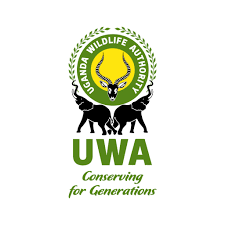The Great Lakes of East Africa: Uganda’s Lakes and the Living Heart of the Continent
The Great Lakes of East Africa form one of the most impressive freshwater systems on the planet, stretching across the Rift Valley and shaping the history, culture, and ecology of the region. Uganda, often called the “Pearl of Africa,” is blessed to lie at the center of this system, sharing several of these vast inland seas. Together, they create an intricate web of waterways that sustain wildlife, nourish communities, and define landscapes of extraordinary beauty. To journey across Uganda is to travel between lakes that sparkle under equatorial sunlight, each with its own story, ecosystem, and charm.
Lake Victoria – Africa’s Largest Freshwater Lake
Dominating the region is Lake Victoria, Africa’s largest freshwater lake and the second-largest in the world after Lake Superior. Covering more than 68,000 square kilometers, it stretches across Uganda, Kenya, and Tanzania, with the largest portion found in Uganda. The lake is the source of the Nile River, which begins its epic journey at Jinja, cascading over Owen Falls before winding northwards across Africa to the Mediterranean Sea.
Beyond its scale, Lake Victoria is a cultural and economic lifeline. Fishing communities depend on its waters for tilapia and Nile perch, while ferries and canoes crisscross its surface linking islands and shorelines. For travelers, the lake offers tranquil escapes on islands like the Ssese Archipelago, where sandy beaches, palm trees, and relaxed lodges create a tropical retreat. Birdwatchers find the wetlands along its fringes alive with kingfishers, herons, and African fish eagles, while sunrise boat rides reveal the lake in its calm, mystical beauty.
Lake Albert – The Rift Valley’s Scenic Jewel
Further west, along the border with the Democratic Republic of Congo, lies Lake Albert, one of the Rift Valley’s classic lakes. Unlike Victoria’s open expanse, Lake Albert is long and narrow, hemmed in by the Albertine Rift’s escarpments and rolling savannahs. This is a lake where wildlife and landscapes meet in dramatic fashion. Its northern shores are touched by Murchison Falls National Park, where the Nile explodes through a narrow gorge before spilling into the lake.
Lake Albert supports a thriving fishing economy, but it is also a crucial ecosystem for birdlife and wildlife. From its wetlands, shoebill storks stalk in silence, while elephants, buffaloes, and antelopes come down to drink. The lake reflects the character of Uganda’s west—a place of wild beauty, shaped by both water and the towering Rift Valley walls that frame it.
Lake Edward – A Safari Lake in Queen Elizabeth National Park
South of Lake Albert lies Lake Edward, another of Uganda’s Great Lakes, situated within Queen Elizabeth National Park. Though smaller than Victoria and Albert, Lake Edward’s setting is unmatched, surrounded by volcanic plains and overlooked by the distant Rwenzori Mountains. Its waters are teeming with fish, supporting local communities that live along its shoreline, while its surrounding savannahs and wetlands host some of the park’s most abundant wildlife.
Lake Edward is connected to Lake George by the Kazinga Channel, a 32-kilometer natural waterway that is one of the most remarkable wildlife corridors in Africa. Here, thousands of hippos wallow, crocodiles patrol the banks, and elephants and buffaloes come to drink. For safari-goers, a boat cruise along the Kazinga Channel is often the highlight of their journey, offering unrivaled opportunities to see large animals at close range against the backdrop of the two Rift Valley lakes.
Lake George – A Smaller Lake with Big Wildlife Importance
Though the smallest of Uganda’s Great Lakes, Lake George plays an outsized role in the ecosystem of Queen Elizabeth National Park. Its shallow waters and papyrus-fringed shores provide refuge for a rich array of wildlife, especially birdlife. It is a designated Ramsar wetland site, recognized internationally for its importance to biodiversity. From African jacanas to herons and migratory species, Lake George is a birder’s paradise.
What makes Lake George particularly special is its connection to Lake Edward via the Kazinga Channel. This natural link creates a water system that sustains not only the wildlife but also the communities that thrive along its banks, making it one of Uganda’s most vibrant and ecologically significant freshwater habitats.
The Great Lakes Beyond Uganda – Tanganyika and Malawi
While Uganda’s share of the Great Lakes system is remarkable, the wider East African region adds further depth to this story. Lake Tanganyika, stretching across Tanzania, Burundi, Zambia, and Congo, is the second-deepest lake in the world and a stronghold of unique fish species. Lake Malawi (Lake Nyasa), lying further south, dazzles with its cichlid diversity and beach-fringed shores. Together with Victoria, Albert, Edward, and George, these lakes form the backbone of the Great Rift Valley, where tectonic forces have created landscapes of immense scale and beauty.
Cultural and Ecological Significance
The Great Lakes are more than natural wonders; they are woven into the lives of millions of people. Fishing villages thrive along their shores, with bustling markets selling fresh catches that feed cities and communities far beyond. Culturally, the lakes have shaped trade routes, kingdoms, and settlement patterns for centuries. Ecologically, they are among the most important freshwater habitats in the world, providing refuge for countless species of birds, fish, and mammals.
For travelers, Uganda’s Great Lakes offer experiences that combine relaxation, culture, and adventure. From beach retreats on Lake Victoria’s islands to wildlife encounters along Lake Albert and Lake Edward, each lake tells a different story yet contributes to the shared identity of the Great Lakes region. They are waters of life, culture, and wilderness, and to explore them is to touch the living heart of East Africa.




